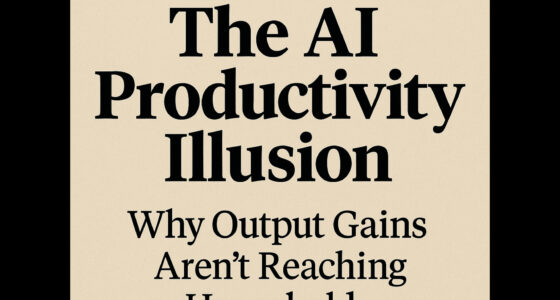To go beyond UBI, consider reshaping wealth distribution by leveraging public assets and supporting community ownership. Embrace degrowth and post-scarcity models that prioritize well-being and sustainability over production. Build community-driven cooperatives that foster collective decision-making, and harness technology like AI to improve access, efficiency, and social impact. These radical ideas can reshape your economy, and exploring them further reveals innovative paths toward economic stability without relying solely on jobs.
Key Takeaways
- Implement community-owned infrastructure and cooperative models to distribute resources equitably beyond traditional employment.
- Transition to degrowth strategies emphasizing local, sustainable production and well-being over GDP growth.
- Leverage advanced AI and digital platforms to facilitate resource sharing, participatory decision-making, and universal access.
- Expand public asset management to fund social programs and promote asset ownership for marginalized communities.
- Foster global cooperation and policy innovation to create resilient, post-scarcity economies centered on social and ecological well-being.
Rethinking Wealth Distribution and Public Assets

Rethinking how we distribute wealth and manage public assets is essential for creating a more equitable economy. Currently, the top 10% controls about 67% of household wealth, with the wealthiest households averaging $7.2 million, while the bottom 50% hold just $52,000. Tax benefits favor the rich, with the top 1% saving over $61,000 annually thanks to recent cuts. Younger generations now hold higher wealth ratios than older ones, and geographic disparities grow wider, especially between wealthy cities and poorer regions. To address this, we can leverage public assets to reduce inequality—by investing in infrastructure, creating community-driven policies, and expanding asset ownership through affordable housing and cooperative models. These strategies can help distribute wealth more fairly and foster economic stability. Recent wealth concentration trends underscore the urgency of reform. Recognizing the importance of wealth distribution can inspire innovative policy solutions that target economic disparities at their roots. Additionally, understanding market research can help identify high-growth opportunities for equitable investments that benefit broader communities. Furthermore, fostering public asset management can ensure resources are allocated efficiently to support long-term economic resilience. Implementing community engagement initiatives can also empower local populations to participate actively in decision-making processes and resource allocation. Strengthening regulatory frameworks around public assets can also prevent further concentration of wealth and promote transparency.
Embracing Degrowth and Post-Scarcity Economies

As we explore new ways to create a fairer and more sustainable economy, embracing ideas like degrowth and post-scarcity models offers promising avenues. Degrowth encourages reducing production and consumption to protect ecosystems and promote social justice, shifting focus from GDP to well-being and environmental health. It values happiness, relationships, and work-life balance over material wealth, emphasizing sustainable, local, and cooperative practices. Unique and wicked planters can serve as a metaphor for innovative, sustainable approaches to resource use and community engagement. Implementing these models also involves reevaluating our horizontal storage solutions to optimize resource management and reduce waste. Recognizing the importance of contrast ratio in creating vibrant, detailed visualizations can inspire more effective communication of these complex ideas to the public. By integrating refrigeration cycle principles, communities can develop energy-efficient systems that support sustainable living and resource conservation. Additionally, understanding shelf life of freshly squeezed juices underscores the importance of efficient resource use and minimizing waste in sustainable practices. Post-scarcity economies leverage advanced technologies to minimize labor needs and maximize resource efficiency, creating abundant resources and decentralized decision-making. Both models aim to prioritize well-being and sustainability, with technology playing a vital role. Moving to these economies requires careful policy support, community involvement, and global cooperation to address environmental limits, reduce inequality, and foster a more equitable future. Supporting policies and community participation are essential for transitioning to these alternative economic frameworks.
Building Community-Centric and Cooperative Models

Building community-centric and cooperative models can transform local economies by empowering residents to take ownership and make decisions collectively. These models foster resilience, especially where traditional markets and public services fall short, by maintaining ownership and profits locally. They also promote gender parity and innovation in sectors like care economy. To deepen their impact:
- Growth in cooperative membership, such as in European cities, signals strong grassroots commitment.
- Successful examples like Mondragón show long-term revitalization through worker-owned cooperatives.
- Federated networks enhance stability and social impact via shared governance and mutual support.
- Recognizing the importance of cultural intelligence can lead to more effective community engagement and better health outcomes, similar to how pre-built models in tiny house construction can significantly reduce build times and improve efficiency.
- Promoting local ownership and participatory decision-making can strengthen community bonds and ensure that economic benefits stay within the area. Additionally, integrating AI-driven community planning tools can optimize resource distribution and foster innovative local solutions.
Leveraging Technology for Equitable Societal Benefits

Harnessing technology offers powerful opportunities to create a more equitable society. By adopting AI, you can improve accessibility and optimize resource distribution, ensuring services reach those who need them most. AI’s potential to create millions of jobs alongside replacing some highlights the importance of ethical governance to protect fairness and rights. Leveraging data-driven insights helps measure social impact more accurately, guiding better investments. In healthcare, AI modernizes services, enabling quicker responses to crises and sharing crucial information. Expanding digital infrastructure, like universal internet access and smart city initiatives, reduces inequality and enhances urban safety. Virtual work environments and efforts to close the digital divide empower more people to participate fully in the economy. Global IT spending is projected to grow 9.3% in 2025, which supports the expansion of digital access and services. Technology, when used responsibly, can foster a more just and inclusive society for all. Additionally, integrating AI-driven analytics into policymaking allows for more precise targeting of social programs, maximizing their effectiveness and reach.
Frequently Asked Questions
How Can We Ensure Equitable Access to Public Assets and Commons?
You can guarantee equitable access to public assets and commons by establishing clear management rules and community governance. Support transparency through open data and digital tools that monitor resource use. Use fair funding models, like progressive taxes or public-private partnerships, to maintain assets. Encourage local custodianship and enforce regulations to prevent overuse. By balancing shared access with effective oversight, you help make these resources available and sustainable for everyone.
What Are Practical Steps to Transition to a Post-Scarcity Economy?
To shift to a post-scarcity economy, you should start by investing heavily in automation and renewable energy to produce goods efficiently and sustainably. Reevaluate property rights, shifting focus from ownership to access, and promote innovation in circular economies. Encourage societal shifts from survival work to pursuits like education and arts, while implementing policies that guarantee equitable resource distribution. Emphasize environmental preservation and explore space resources to expand available supply.
How Do Cooperative Models Address Economic Inequality Effectively?
When it comes to tackling economic inequality, cooperatives are a real game-changer. You leverage shared ownership to redistribute income more fairly, giving everyone a seat at the table. You empower marginalized groups, help reduce poverty, and reinvest profits back into the community. By fostering inclusive decision-making, you make sure benefits are spread equitably, proving that working together can truly move the needle on inequality.
What Role Does Technology Play in Fostering Social Cohesion?
You see, technology can be a powerful tool to foster social cohesion by connecting people across distances and building communities. It enables collaboration, sharing resources, and creating inclusive spaces. However, it can also deepen divides through misinformation and polarization. To harness its positive potential, you need to promote digital literacy, design platforms for inclusivity, and encourage responsible use, ensuring technology strengthens social bonds rather than weakening them.
How Can Global Cooperation Be Achieved for Economic Reforms?
Imagine a world where your efforts unite nations to shape a better future. To achieve global cooperation for economic reforms, you need open communication, shared goals, and trust. Engage with international organizations like the WTO, IMF, and World Bank to build consensus. Embrace reforms that address emerging economies’ needs, and foster collaboration on trade, climate, and health. When nations work together, real change becomes possible, creating stability and prosperity for all.
Conclusion
As you explore these radical ideas, remember that shifting our economy is like turning a massive ship—slow but possible with steady effort. By rethinking wealth, embracing scarcity’s end, building community bonds, and harnessing technology, you can help steer society toward a future where abundance benefits all. This isn’t just a dream; it’s a map for turning the impossible into reality, transforming our world from a fragile glass to an unbreakable mosaic.









